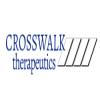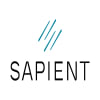Biotech IPOs are the industry’s lifeblood. Track how they’re performing here.
Initial public offerings make the biotechnology industry tick. Stock listings give young companies the funding they need to develop their drugs, and their venture backers an opportunity to earn a return.
For much of the past decade, biotechs found Wall Street receptive to their pitches. Public investment, drawn in by scientific advances and company successes, bolstered generations of new drugmakers.
IPO activity reached a peak in 2021, when more than 100 biotechs priced an initial offering and together raised nearly $15 billion. But that momentum came to a halt as 2021 turned to 2022, and stock prices of newly public companies plummeted amid a sector-wide downturn. The pace of IPOs stalled and, last year, only 19 drugmakers priced initial share sales.
Emerging biotechs now face a tougher road to public markets. Which will make it? Which create value and which fail? What types of companies earn the best returns? Who are their investors?
Biopharma Dive is tracking these questions in the database below, which will be updated regularly. If we've missed anything, or there's any additional information you'd like to see, please reach out and let us know.
Editor's note: Click on a company to pull up more information, and scroll to the bottom of the page to read how this information was collected and organized. If tables or values do not display below, please try clearing your browser's cache and reloading the page.
Z
A
Biotech IPOs, by year and proceeds
Biotech IPOs, by year and stage of development
Biotech IPOs, by year and therapeutic category
Biotech IPOs, by year and drug type being developed
Methodology
For this database, BioPharma Dive includes biotech companies that raised funds in an initial public offering on a U.S. stock exchange. We define biotechs as developers of new prescription medicines. Makers of generic or over-the-counter drugs are not included, nor are IPOs by special purpose acquisition companies, diagnostics and medical device makers.
Company and investor information was collected from the Form S-1 companies file with the Securities and Exchange Commission before an IPO.
Shareholder names are listed by firm, rather than the specific fund that invested in a company. Individual trusts or holdings that own 50% or more of a company are also noted. In some cases, particularly with smaller IPOs, individual people are listed.
The equity raised before an offering typically consists of both stock and convertible securities, and was collected from the "liquidity and capital resources" and "financing activities" sections of an S-1. Total proceeds refers to the money raised at IPO pricing and doesn't always reflect subsequent exercise of options by underwriters.
Current share prices, percent change and market capitalization are from Google Finance. For companies with "N/A," the figures returned by Google Finance do not reflect the correct value and are omitted, or the companies have since been delisted or acquired.
Equity percentages and money raised are rounded to the nearest whole number.
Companies running multi-phase trials are listed by the earlier phase.














